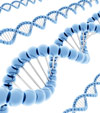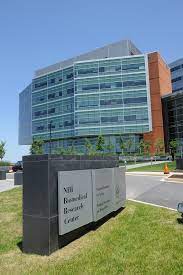Genetics And Gene Therapy. What Are Genes?
Hormone Replacement Therapy
What is a Gene?
Video Link: https://vimeo.com/182905482
Video Download: Medical Gene Therapy
Video Stream: Medical Gene Therapy
Genetics and Gene Therapy
What Are Genes?

Genes are the simplest functional components of life on earth. An organism's entire collection of genes is known as its genetic code and DNA. The genetic code is a literal blueprint that can create an organism.
A gene is a single data point on a piece of DNA that controls some aspect of the organism. Genes control everything about us via the way that they allow for the creation of proteins and enzymes that are the building blocks of all life forms.
What Are Chromosomes?
Chromosomes make up the next level of genetic organization. All genes are particular aspects of a DNA molecule, and DNA is arranged into helix structures known as chromosomes. All organisms with a nucleus have a specific number of chromosomes associated with their species which comprises a complete genetic code.
There are rare instances where certain organisms have more or fewer normal chromosomes, but this represents a mutation and does not represent the species as a whole.
What is RNA?
RNA is derived from DNA and genes and is directly responsible for producing proteins and enzymes that control the body's function. The genetic code controls the metabolic function and the structure of each individual cell within an organism.
Reproductive Chromosomes Unique
Sperm and eggs are unique cells within the body because they only contain split chromosomes. When reproduction occurs, the two sets of half-chromosomes combine, creating an entirely new and randomized set of chromosomes, which can create a brand new organism that shares the individual traits of both the mother and the father.
Gene Composition
Molecularly, every gene is comprised of what are known as nucleotides. These nucleotides are the central building blocks of the genes themselves. All nucleotides are designed in the same way. They contain three components: a phosphoric acid, a sugar, and a compound containing nitrogen. These nucleotides form the double-helix structures which are associated with the DNA molecule.
Importance of Junk DNA
Although a complete set of chromosomes contains all the data needed to design an organism, many DNA strands do not serve any direct purpose. Any DNA Segment that does not contribute to the production of proteins is known as Junk DNA.
Junk DNA is scientifically referred to as Introns. All parts of the genetic structure that actually can create proteins are known as Exons.
Fascinatingly, the vast majority of DNA in the human genetic code is junked DNA. Only three percent of the DNA contained within your genetic code contributes to your development. Although it sounds like Junk DNA is worthless, it plays a real and significant role in the proper function of the chromosomes.
Every species has a specific number of chromosomes, which are organized similarly. Changing the composition of the genes or the number of chromosomes causes what is known as a mutation.
When these mutations occur in normal cells, they can cause many problems. Junk DNA reduces the odds that these mutations occur while stabilizing DNA Structure.
What is the Science of Genetics?
Genetics is the scientific study of heredity and inheritance. The term Genotype refers to an organism's specific genetic makeup. Genotype refers to traits as they are expressed in the genetic code.
Phenotype, on the other hand, accounts for what we perceive. Phenotype refers to how the genes are ultimately expressed within the organism. The term Genome refers to the complete blueprint of the genetic code of a specific species.
What Was the Human Genome Project

Our scientific knowledge of human genetics is incredibly new. The Human Genome was not fully uncovered until 2003. The Human Genome Project was responsible for mapping the entire human genetic code.
The project was first proposed in 1990 and took thirteen years and three billion dollars to complete. When we completed the blueprint in 2003, what we had was akin to a map without a legend.
Scientists have spent the last decade decoding the blueprint, attempting to discover the purpose of every gene in the genetic code. As researchers and scientists more fully understand the Human Genome, we can take advantage of that knowledge in countless ways.
What is Genetic Therapy?
Genetic Therapy is the use of Genetic Engineering and our knowledge of the Human Genome and those of other species to treat chronic diseases and disorders associated with various medical issues. Because the science of Human Genetics is so new and young, many of these techniques remain in the experimental phase.
At this point, the most complicated aspect of Genetic Therapy is how to administer the treatment to specific target cells appropriately. For these forms of treatment to have a powerful and long-lasting effect, they must be delivered to the necessary target so that they can reproduce and propagate among the surrounding tissues. There are two primary means by which Gene Therapy takes place:
Ex Vivo Therapy - In this treatment, tissue is extracted from the patient, which is then Genetically Altered and returned to the body. This form of therapy involves either treating human cells after they have been extracted or altering the cells before returning them to the body.
The most promising research regarding Ex Vivo Gene Therapy is neurodegenerative diseases such as Parkinson's. One way that scientists have learned to do this is through Ex Vivo Therapy. Defective cells are removed from the patient and fortified with genetically healthy copies. After the healthy cells have been given the chance to propagate, they are re-administered to the patient.
In Vivo Therapy - In this form of treatment, therapies that feature Genetically Engineered Medicines are administered directly to the patient. One way to do this is to inject a gene into a non-symptomatic or inactivated virus and let the virus spread the healthy genes to target cells.
Another In Vivo approach is to attach the corrective gene to a liposome so it may enter the cell through its membrane. Liposomes are microscopic pouches surrounded by fat that can breach the cell membranes because of their lipid composition.
A third In Vivo approach is known as Chimeraplasty. In this form of Gene Therapy, Bio-Engineered Nucleic Acids are delivered via liposome to resolve pathogenic mutations. One way these treatment works is by releasing a chemical that the human body cannot produce naturally.
Another way is by counteracting a pathogenic mutation, correcting it, or rendering it inert. A third way this treatment works is by marking cancer cells so that other medical treatments can more readily eradicate them.
First Use of Gene Therapy
Gene Therapy is one of the newest medical techniques available to mankind. In human patients, it was first used as a medical treatment in 1990 to treat a pediatric patient suffering from Adenosine Deaminase Deficiency.
ADA Deficiency is a significant medical disorder that severely restricts the immune system from functioning. Sometimes, it completely shuts down the Immune System, leaving the patient dangerously exposed to outside pathogens. The future potential for Gene Therapy is incredibly bright. Scientists worldwide are coming up with new and innovative ways to treat disorders such as AIDS, various genetic disorders, and numerous cancers.
Gene Therapy Roadblocks
Despite the evident and exciting potential of Genetic Therapy, there are a number of roadblocks that slow down the development of new and valuable treatments. Scientists must be careful to create gene therapies that the human immune system does not perceive as a threat.
In addition to this, researchers must be absolutely sure that the viruses that they use are unable to become virulent and dangerous over time. It is also essential that Gene Therapies do not alter the genetic code of reproductive cells to preserve the normal function of heredity.
essential that Gene Therapies do not alter the genetic code of reproductive cells to preserve the normal function of heredity.
State of Gene Therapy in the USA
All Gene Therapies are considered medications in the United States and must be approved by the American Food and Drug Administration. The United States also has a panel that belongs to the National Institute of Health, which is dedicated to monitoring Gene Therapies, known as the Recombinant DNA Advisory Committee.
Although Gene Therapy is a new field, or perhaps because of it, it is incredibly lucrative and competitive in both the public and private sectors. Many techniques have also been successfully patented.
Recombinant Hormone Replacement Therapy
Hormone Replacement Therapy is another everyday use of Recombinant DNA Technology. Compared to En Vivo or Ex Vivo Therapy, Bio-Identical Hormone Replacement Therapy alters the genetic structure of microorganisms to produce a valuable form of medication.
Bio-Identical Human Growth Hormone HRT is an example of this type of therapy. Although HGH can be derived directly from the pituitary gland of cadavers, the safest and most common method today is to re-engineer bacteria to secrete Human Growth Hormone, which can be safely and sterilely extracted for medical use.
Specifically, E.Coli bacteria are redesigned to release Growth Hormone molecules that are entirely identical to those created by the human body.
Bio-Identical Hormone Replacement Therapy is the future of safe and natural Hormone Restoration.
Video Link: https://vimeo.com/181530197
Video Download: Medical Gene Therapy 2
Video Stream: Medical Gene Therapy 2

References
- 0001 What Is Male Hypogonadism? [Last Updated On: October 26th, 2025] [Originally Added On: July 18th, 2020]
- 0002 What Is Low-t And How Can It Effect My Life? [Last Updated On: August 12th, 2025] [Originally Added On: July 22nd, 2020]
- 0003 Identification Of Late Onset Hypogonadism In Middle Aged And Elderly Men [Last Updated On: September 12th, 2025] [Originally Added On: July 24th, 2020]
- 0004 Importance Of Hormone Balance For A Man's Health [Last Updated On: August 10th, 2025] [Originally Added On: July 25th, 2020]
- 0005 Subcutaneous Injection Procedures [Last Updated On: August 9th, 2025] [Originally Added On: July 30th, 2020]
- 0006 Whey Protein [Last Updated On: June 13th, 2025] [Originally Added On: August 3rd, 2020]
- 0007 Hormone Replacement Therapy Blood Testing [Last Updated On: June 14th, 2025] [Originally Added On: August 7th, 2020]
- 0008 Gh-rh [Last Updated On: June 6th, 2025] [Originally Added On: August 12th, 2020]
- 0009 How Does Growth Hormone Testing Work? [Last Updated On: February 13th, 2025] [Originally Added On: August 15th, 2020]
- 0010 Important Figures In Hormone Replacement Therapy Research [Last Updated On: May 16th, 2025] [Originally Added On: August 16th, 2020]
- 0011 Certified Age-management And Longevity Professionals [Last Updated On: February 17th, 2025] [Originally Added On: August 28th, 2020]
- 0012 Bio-identical Genotropin Hormone Replacement Therapy [Last Updated On: May 6th, 2025] [Originally Added On: September 4th, 2020]
- 0013 HGH Injections [Last Updated On: February 28th, 2023] [Originally Added On: March 7th, 2021]
- 0014 Growth Hormone Injection Treatment For Women [Last Updated On: February 17th, 2025] [Originally Added On: March 8th, 2021]
- 0015 Buy Growth Hormone Injection Treatment For Men [Last Updated On: February 19th, 2025] [Originally Added On: March 9th, 2021]
- 0016 The Conscious Evolution Institute For Quality Hormone Replacement Therapy [Last Updated On: September 19th, 2025] [Originally Added On: March 10th, 2021]
- 0017 25 Foods That Can Improve Your Health [Last Updated On: September 18th, 2025] [Originally Added On: March 11th, 2021]
- 0018 Change Your Life With A Conscious Evolution Lifestyle [Last Updated On: February 19th, 2025] [Originally Added On: March 12th, 2021]
- 0019 Understanding The Various Causes Of Human Obesity [Last Updated On: February 19th, 2025] [Originally Added On: March 13th, 2021]
- 0020 Male Hormone Replacement Therapy Blood Panel [Last Updated On: February 18th, 2025] [Originally Added On: March 15th, 2021]
- 0021 Getting Started With Hormone Replacement Therapy [Last Updated On: February 19th, 2025] [Originally Added On: March 17th, 2021]
- 0022 Buy Female Blood Diagnostics [Last Updated On: September 15th, 2025] [Originally Added On: March 18th, 2021]
- 0023 Low Testosterone and other Sex Drive Killers that Cause Low Libido in Men [Last Updated On: February 14th, 2025] [Originally Added On: May 1st, 2022]
- 0024 The effects of Human Growth Hormone (HGH) on the skin [Last Updated On: February 18th, 2025] [Originally Added On: May 8th, 2022]
- 0025 Testicle Tanning – See Through the Hype [Last Updated On: February 19th, 2025] [Originally Added On: May 30th, 2022]
- 0026 Lean Muscle Mass Critically Important to Healthy Aging [Last Updated On: February 18th, 2025] [Originally Added On: June 28th, 2022]
- 0027 Can Vitamin B6 Help Relieve Anxiety? [Last Updated On: February 14th, 2025] [Originally Added On: August 2nd, 2022]
- 0028 A Chemical Found in Common Household Items May Disrupt a Hormone Necessary for Healthy Pregnancy [Last Updated On: March 25th, 2025] [Originally Added On: August 2nd, 2022]
- 0029 Matching Libidos Ensure Healthy Relationships [Last Updated On: March 5th, 2025] [Originally Added On: December 11th, 2022]
- 0030 How Fluctuating Libidos Affect Aging Men and Women [Last Updated On: February 19th, 2025] [Originally Added On: January 10th, 2023]
- 0031 Adopting a Conscious Evolution Lifestyle for Improved Health and Longevity [Last Updated On: February 9th, 2025] [Originally Added On: February 9th, 2025]
- 0032 Male Hormone Replacement Therapy: Diagnostic Blood Test Regime [Last Updated On: February 14th, 2025] [Originally Added On: February 13th, 2025]
- 0033 Unleash the Power of Vitamin B6: The Natural Antidote to Anxiety! [Last Updated On: February 14th, 2025] [Originally Added On: February 14th, 2025]
- 0034 The Impact of Human Growth Hormone Deficiency in Men [Last Updated On: February 16th, 2025] [Originally Added On: February 15th, 2025]
- 0035 Maintaining Lean Muscle Mass: A Crucial Facet of Healthy Aging [Last Updated On: February 17th, 2025] [Originally Added On: February 15th, 2025]
- 0036 Introduction to Testicle Tanning [Last Updated On: February 11th, 2025] [Originally Added On: February 16th, 2025]
- 0037 Introduction to Hormone Replacement Therapy [Last Updated On: February 17th, 2025] [Originally Added On: February 17th, 2025]
- 0038 Importance of Matching Libidos for Healthy Relationships [Last Updated On: February 19th, 2025] [Originally Added On: February 19th, 2025]
Word Count: 1513






